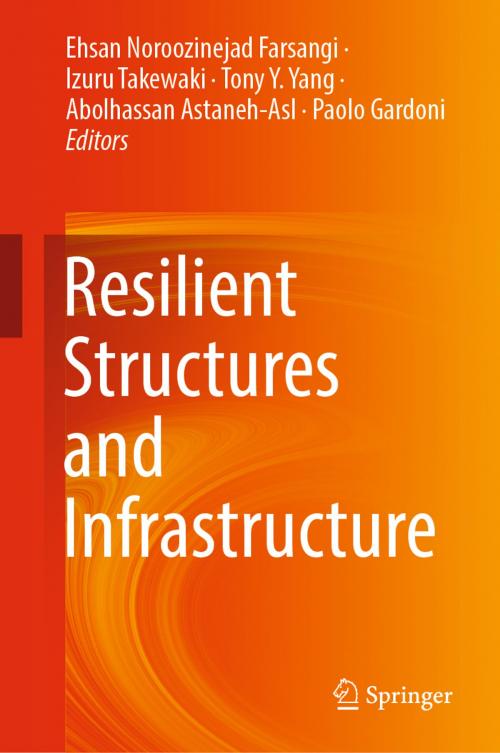Resilient Structures and Infrastructure
Nonfiction, Science & Nature, Technology, Fire Science, Nature, Environment, Natural Disasters| Author: | ISBN: | 9789811374463 | |
| Publisher: | Springer Singapore | Publication: | May 3, 2019 |
| Imprint: | Springer | Language: | English |
| Author: | |
| ISBN: | 9789811374463 |
| Publisher: | Springer Singapore |
| Publication: | May 3, 2019 |
| Imprint: | Springer |
| Language: | English |
This book discusses resilience in terms of structures’ and infrastructures’ responses to extreme loading conditions. These include static and dynamic loads such as those generated by blasts, terrorist attacks, seismic events, impact loadings, progressive collapse, floods and wind. In the last decade, the concept of resilience and resilient-based structures has increasingly gained in interest among engineers and scientists. Resilience describes a given structure’s ability to withstand sudden shocks. In other words, it can be measured by the magnitude of shock that a system can tolerate. This book offers a valuable resource for the development of new engineering practices, codes and regulations, public policy, and investigation reports on resilience, and provides broad and integrated coverage of the effects of dynamic loadings, and of the modeling techniques used to compute the structural response to these loadings.
This book discusses resilience in terms of structures’ and infrastructures’ responses to extreme loading conditions. These include static and dynamic loads such as those generated by blasts, terrorist attacks, seismic events, impact loadings, progressive collapse, floods and wind. In the last decade, the concept of resilience and resilient-based structures has increasingly gained in interest among engineers and scientists. Resilience describes a given structure’s ability to withstand sudden shocks. In other words, it can be measured by the magnitude of shock that a system can tolerate. This book offers a valuable resource for the development of new engineering practices, codes and regulations, public policy, and investigation reports on resilience, and provides broad and integrated coverage of the effects of dynamic loadings, and of the modeling techniques used to compute the structural response to these loadings.















